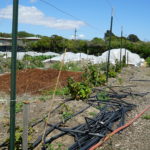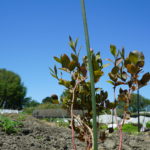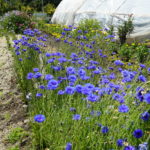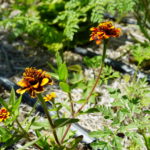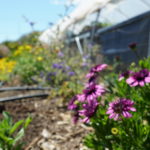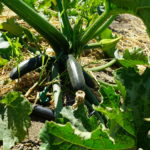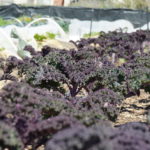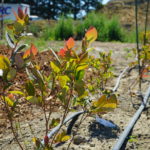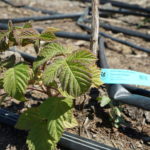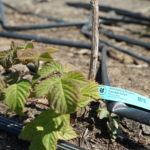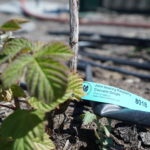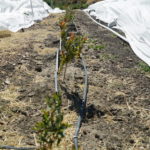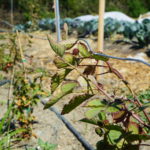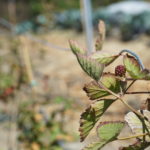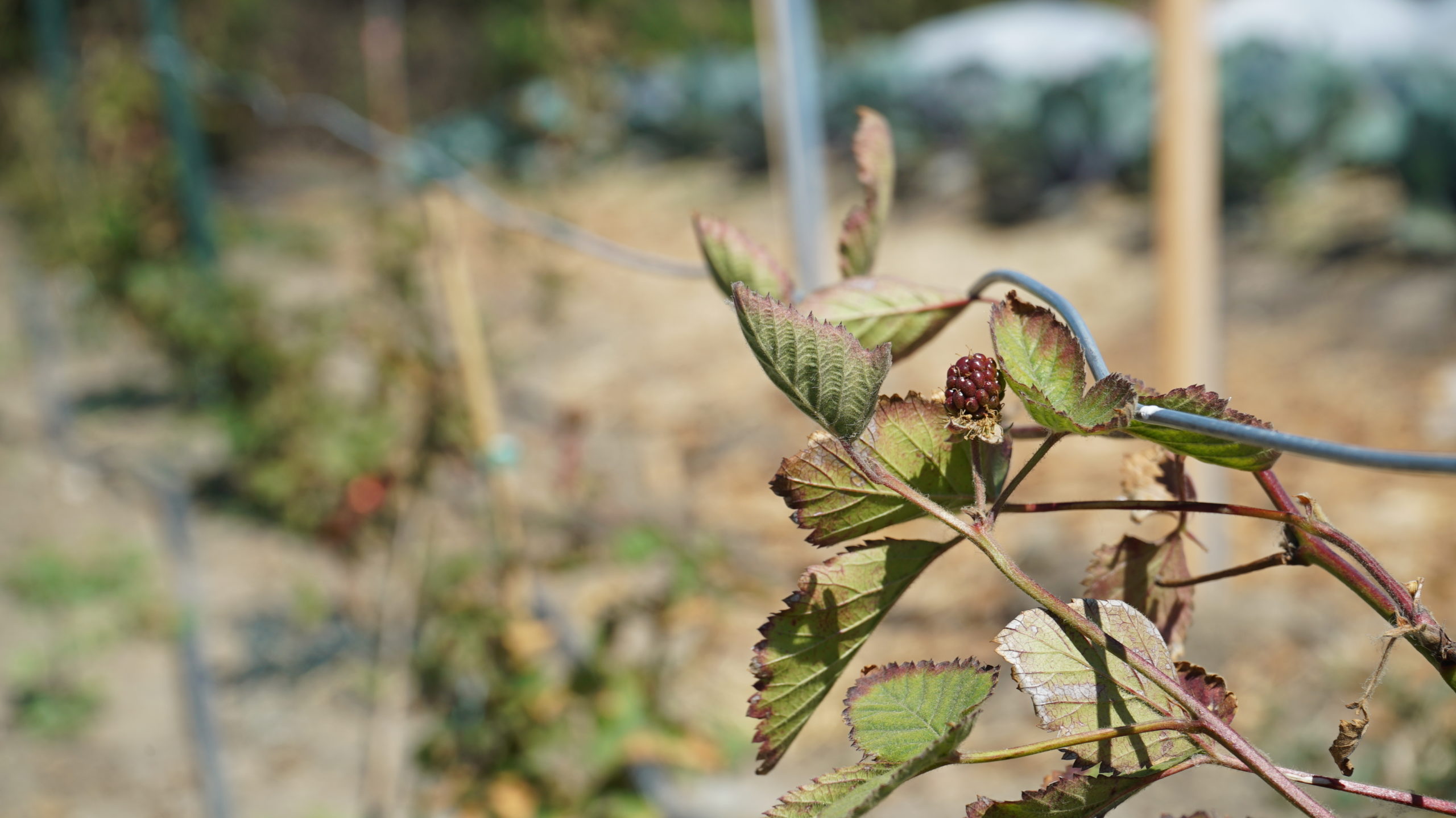
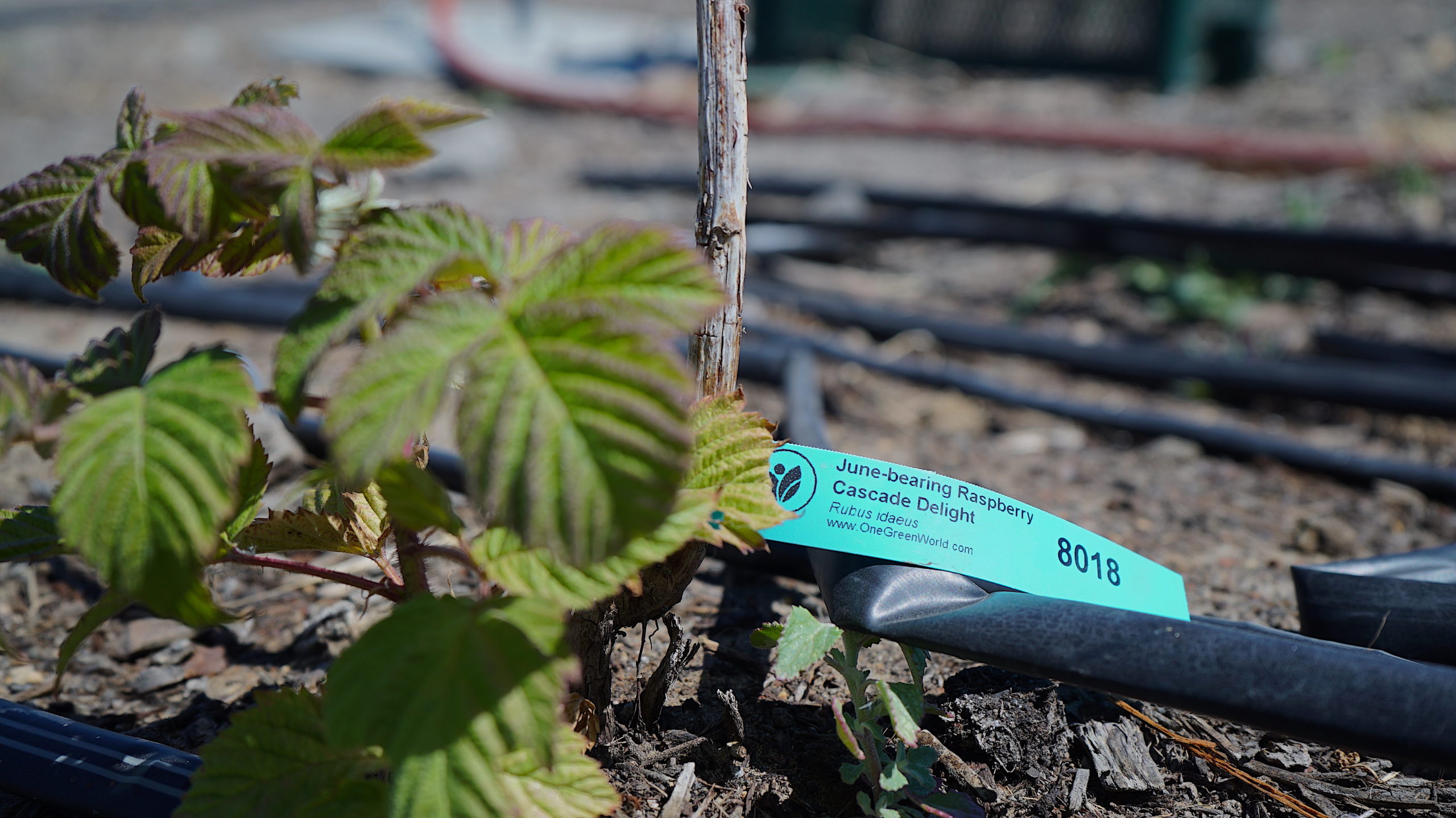 Back in April, our North Richmond Farm crew, staff and volunteers worked hard, rain and shine, to finish the raspberry beds and to weed the orchard. Now, the berries are starting to pop their little heads out!
Back in April, our North Richmond Farm crew, staff and volunteers worked hard, rain and shine, to finish the raspberry beds and to weed the orchard. Now, the berries are starting to pop their little heads out!
We started the whole process by adding fluffy soil to a 2 ft deep trench that they dug. The native soil was very clayey and is prone to flooding due to the lack of absorption…and the berries do not like wet feet!
To fix this, we dug the clay out and added 8 parts sandy loam, 1 part pine wood chips, and 1 part compost, plus some perlite and cottonseed meal fertilizer to create a soil which is slightly acidic (6 to 6.5 pH) and that will drain better. We used organic fertilizer, which means it’s very important to fertilize right when you plant. Then we finally transplanted the raspberry canes and side dressed the sides with fertilizer making sure not to touch the plant (because organic fertilizer burns them!) A 2-feet tall raised bed would also be good for berries.
In total we planted 1 and half of a bed of raspberry, 1 of blackberry, and 2 of blueberries. We trellised with 2 posts and 3 wires to give the berry stems to have something to weave through. Trellises keep them growing upward and give them structure. The berries are growing and adapting to its placement. Some are doing better than others, but raspberries have been thriving the most. The blackberry, sadly, not so much. The part we planted dried up but on the bright side, new shoots are growing up! The blueberries are a little too yellow but we think it might be because the soil is too acidic: blueberries require about 4.5 pH whereas blackberries need 6.5.

In the winter, we will cut the canes back and prune them, after a spring/summer of growing and spreading their wings. It’s important to prune intentionally and to judge which stems look the healthiest because those will be the best fruiting cane. Raspberries and blackberries don’t produce fruit in the first year unless they are ‘fall’ berries, which are different from the ones we planted. Summer berries produce more fruit, generally speaking, but you do have to wait longer (2 years).
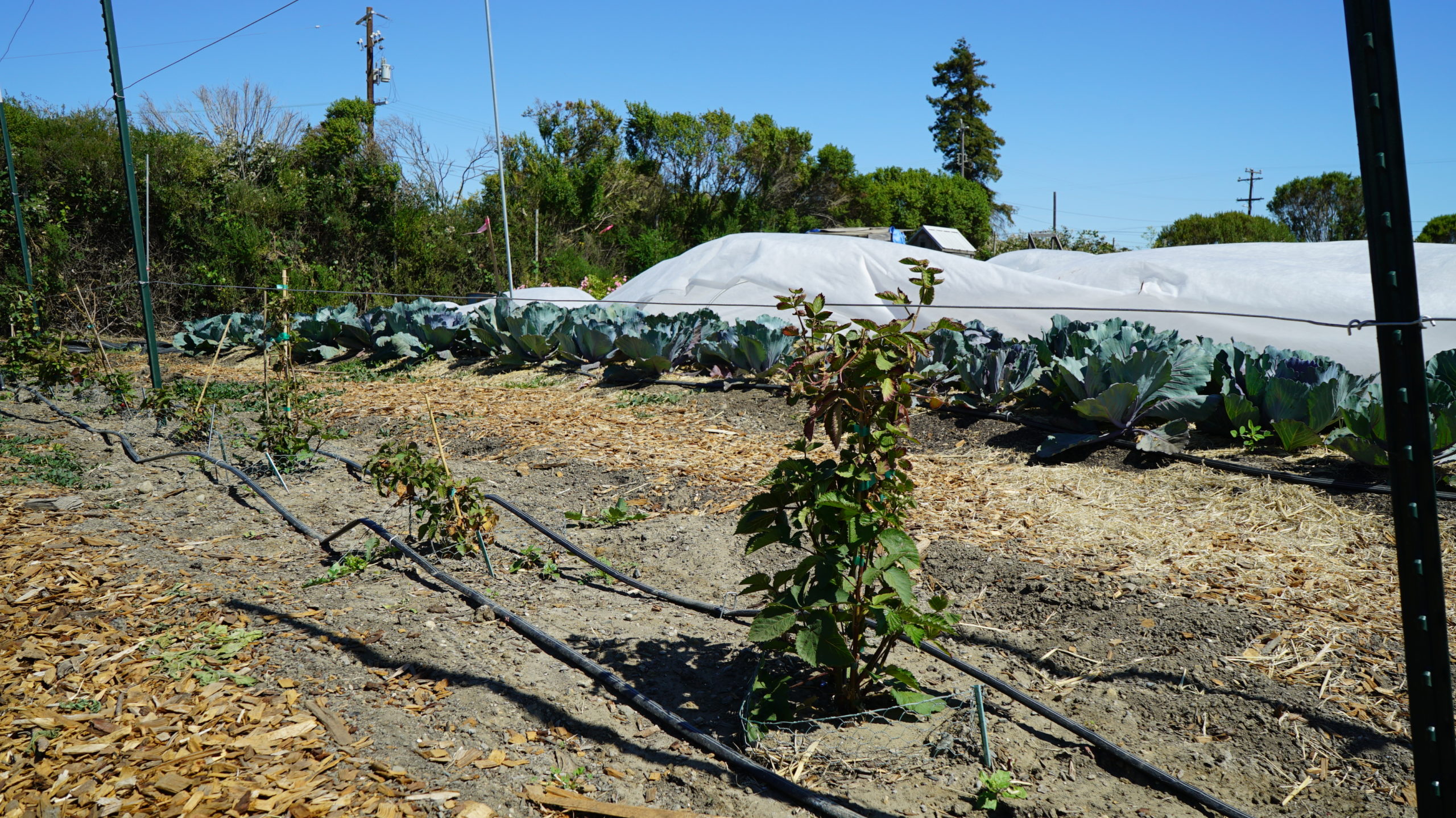
The type of berries we plant needs more love so that they don’t grow uncontrollably. They are formless- meaning they grow with no spines which makes it a lot easier and less painful to pick! And they are also 3 times bigger than wild berries, so more juice and more goodness! The berries are specifically chosen to thrive in Richmond’s climate as well. You can’t spell plants without having a plan first!
The total amount of footage of berries planted ended up being about 200 feet…that’s a lot of berries! We can’t wait to see how these beds turn out and can’t wait to show off their progress.
Check out pictures of the berry beds North Richmond Farm

